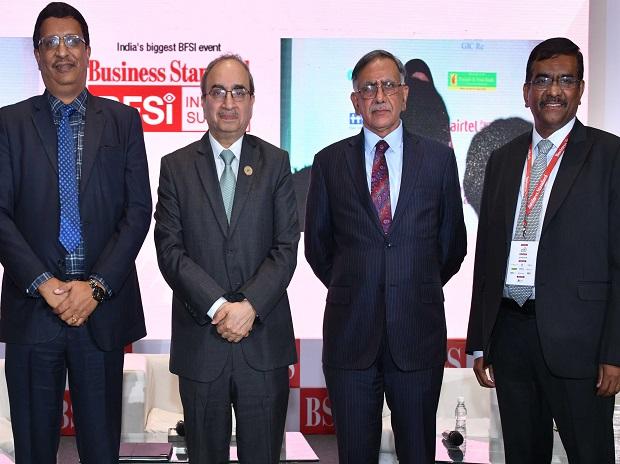[ad_1]
Exuding confidence in sustaining the tempo of credit growth, public sector bankers said on Wednesday that consolidation in the public sector bank (PSB) space has given them a robust base to scale. The privatisation of PSBs can be done through divestment of government stake to a wider base of investors without haste.
There is nothing to worry about at this point (high credit offtake) as underwriting standards and risk management are much better. They have learnt their lessons from earlier episodes.
State-owned lenders have been through tough times. This elevated credit offtake (17.5 per cent year-on-year growth) is coming on the back of a low base of two years of the pandemic when loan portfolio expanded at a slow pace (single digits).
In course of a panel discussion on the privatisation of PSBs at the Business Standard BFSI Insight Summit 2022 in Mumbai on Wednesday, Sanjiv Chadha, managing director (MD) and chief executive officer (CEO), Bank of Baroda (BoB), said the banking structure needs to be different from the one we have today, keeping in mind the aim to become a $5-trillion economy.
“The government must look at privatisation. Making a start by privatising two PSBs is the right approach,” he said.
Rajkiran Rai G, MD, National Bank for Financing Infrastructure and Development (NaBFID), said the privatisation concept comes at two points — PSBs need capital, and the efficiencies of banks are being discussed.
At present, they are doing quite well — whether it is on the growth side, efficiency, or profitability. This is on the back of two black swan events — consolidation of PSB space and the Covid-19 pandemic.
PSBs have held their ground. They are better-capitalised and their technology adoption has been quite impressive. The pressure to privatise is less now, said Rai, who was earlier MD and CEO of Union Bank of India until May this year. He was involved in the amalgamation of Andhra Bank and Corporation Bank into Union Bank in 2020.
The government could look at privatising one or two entities to understand how it works. Given the economic disparities, full-scale privatisation of banks may be 10-15 years away, observed Rai.
About privatisation of state-owned banks, State Bank of India (SBI) Chairman Dinesh Kumar Khara said he was agnostic to ownership.
“The organisation should be efficient.
In the Indian banking sector, there are examples where private lenders have been bailed out by the public sector,” he said.
Soma Sankara Prasad, MD and CEO, UCO Bank, said the focus on privatisation stems from the notion that whatever is private is efficient and good. And whatever is public, not so.
This is not true.
“Efficiency is ownership-agnostic. If you create the right conditions for someone to function efficiently, things will be good — whether it is a public or private enterprise,” he added.
Privatisation is a Government of India call it should take from the point of view of divestment, raising resources, and reducing its presence in the banking space, said Prasad.
Khara said consolidation within SBI Group, starting with the merger of State Bank of Saurashtra in 2008 to the amalgamation of five associate banks in 2017, has “helped, else deployment of capital would not have been efficient”.
These were small entities and were competing amongst themselves and with the parent. In the process, they were losing net interest margins.
Referring to high credit growth, BoB chief said it is due to a combination of factors.
One, is the base effect. Credit growth was low in the last two fiscal years.
Two, there is pent-up demand. The growth would moderate.
“It is premature to have apprehensions on this count,” he said.
Also, the character of loan growth is different now. Banks are lending significantly to the retail sector. In the previous credit growth cycle, the exposure to the corporate sector was high and banks had to face problems due to large defaults, he added.
Credit growth has been on an uptrend, with wholesale and retail contributing to it. Credit for the services sector accelerated primarily due to a rise in non-banking financial companies and trade segments. Retail credit growth has been strongly led by a miniaturisation of credit, housing, and vehicle loans, and micro, small and medium enterprises growth remaining elevated due to the Emergency Credit Line Guarantee Scheme.
Corporate borrowings indicate increased bank funding as bond yields have prompted companies to optimise their borrowing cost. The industry segment also grew due to inflation-induced higher working capital demand. Further demand for new capital expenditure will likely drive the industry’s credit growth.
[ad_2]
Source link



